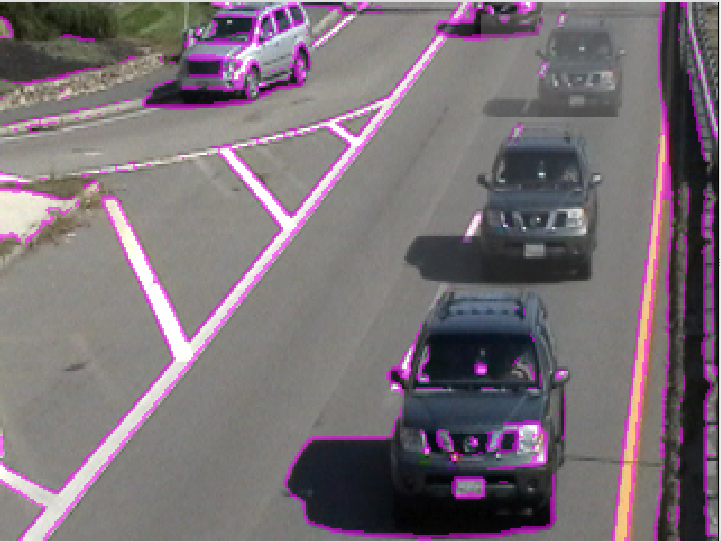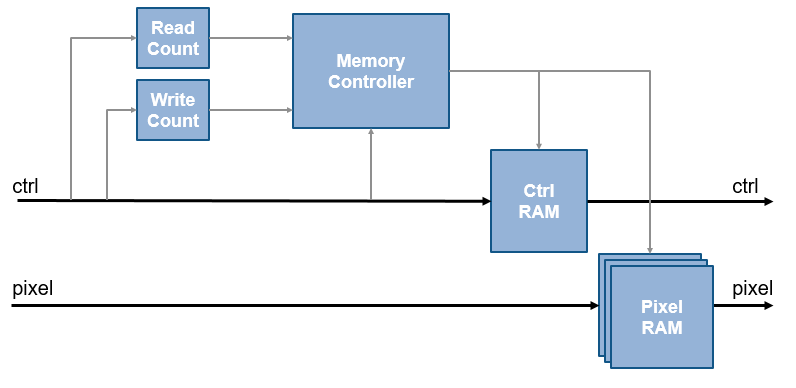Pixel Stream FIFO
Buffer input stream to create image lines that have contiguous valid pixels
Libraries:
Vision HDL Toolbox /
Utilities
Description
The Pixel Stream FIFO block stores incoming valid pixels and accompanying control signals and returns the same pixel stream without gaps between the valid pixels of each line. The block preserves the total line size and total frame size of the video stream, including invalid cycles.
Use the Pixel Stream FIFO block to buffer video sources. The waveform shows a direct memory access (DMA) video source, where pixels are read in bursts, and a Camera Link® video source, where pixels are valid every second clock cycle. To create contiguous video lines, a Pixel Stream FIFO block buffers the input pixels and control signals of each source.

Examples
Ports
This block uses a streaming pixel interface with a bus for
frame control signals. This interface enables the block to operate independently of image size
and format. The pixel ports on this block support single pixel streaming or
multipixel streaming. Single pixel streaming accepts and returns a single pixel value each clock
cycle. Multipixel streaming accepts and returns a vector of M pixels per
clock cycle to support high-frame-rate or high-resolution formats. The M
value corresponds to the Number of pixels parameter of the Frame To
Pixels block. Along with the pixel, the block accepts and returns a
pixelcontrol bus that contains five control signals. The control signals
indicate the validity of each pixel and their location in the frame. For multipixel streaming,
one set of control signals applies to all pixels in the vector. To convert a frame (pixel
matrix) into a serial pixel stream and control signals, use the Frame
To Pixels block. For a full description of the interface, see Streaming Pixel Interface.
This block also supports multipixel-multicomponent streams, where the pixel input is a matrix of M-by-N values. M is number of pixels and N is number of components. These values correspond to the Number of pixels and Number of components parameters of the Frame To Pixels block.

